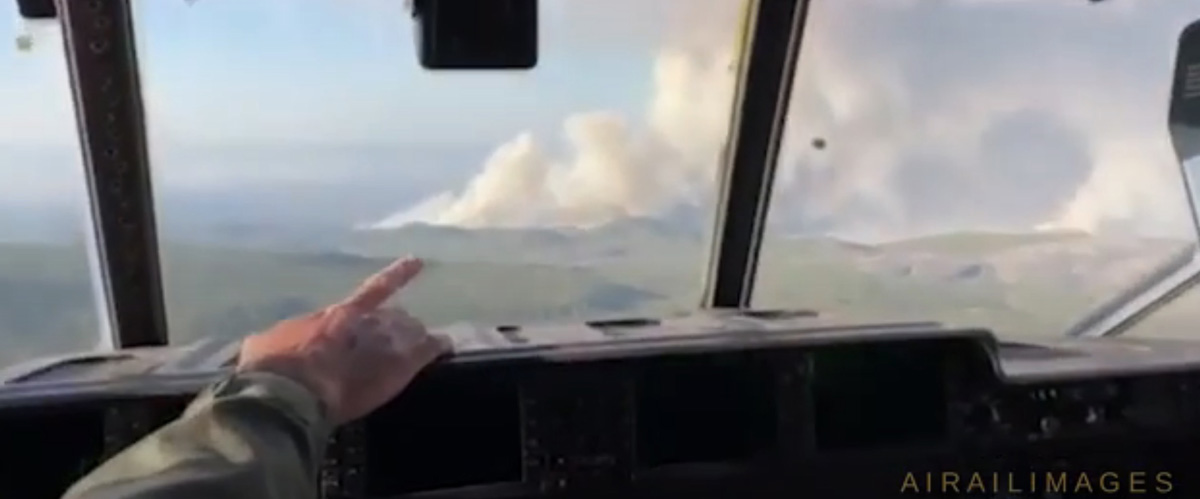
Fred Johnsen of AIRAILIMAGES sent us information about a video he compiled about the California National Guard C-130s that were activated with the slip-in Modular Airborne Fire Fighting System. The MAFFS can spray up to 3,000 gallons of fire retardant using the air-pressurized system.
Fred describes the video:
Here’s a blend of two video B-Roll segments from the California Air National Guard showing the preparation of he 146th Airlift Wing’s C-130s for use as firefighters, and then actual fire duty from the cockpit in July 2020. Look closely and you will see the lead plane put out a stream of smoke where the C-130 is supposed to drop. And listen to the sounds of the drop from the cockpit.
The two C-130s from the California National Guard were replaced after a week as scheduled on July 29 by a Herc from Nevada Air National Guard’s 152nd Airlift Wing “High Rollers” and one from the Air Force Reserve’s 302 Airlift Wing out of Peterson Air Force Base at Colorado Springs.

Whatever happened to the the MAFFS improvement programs by the Air National Guard ? Such as: the system design by Strata-G Solutions at https://strata-llc.com (under Projects C-130H/J IMAFFS) and the Improved MAFFS 2.5 system presented by Colonel Paul Hargrove at AFF USA (Tangent Link) in March 3, 2014.
The I-MAFFS and Improved MAFFS 2.5 are basically the same thing. In the beginning of the I-MAFFS program there were three proposals given to the government for what . The first was basically a copy of MAFFS II but with a few safety improvements and changes due to obsolescence. The second was I-MAFFS 2.5 which had 10% more capacity, safety improvements, lighter weight, double the crash loads and easy interchangeability with the C-130 H and J. The third proposal was I-MAFFS 3.0, which would have had about 3,600-4,000 gallons of retardant, would have been nearly impossible to accomplish without a massive budget and a much longer development time due to the amount of weight savings needed. The Air Force and US Forest Service chose the I-MAFFS 2.5 option and from then on it was just known as I-MAFFS. The program was about a year from completion. Design, drawings and analysis were about 98% complete. Almost all the individual parts for two systems were manufactured and mostly just needed assembled. High pressure tanks, main tank, foam tank and door were all pressure tested. The program was put on an indefinite hold a little more than a year ago. I was proud to have worked on the program for 6 years and it was a big leap above MAFFS II in terms of quality, safety and engineering.